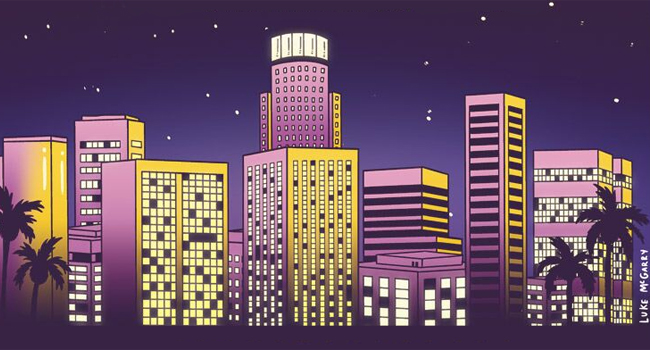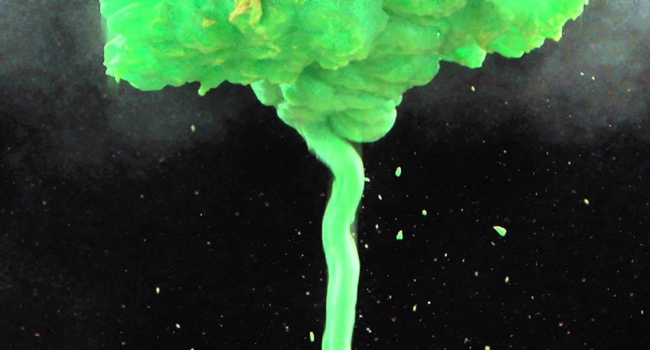 On Feb. 1, 1964, The Beatles’ “I Want To Hold Your Hand” reached No. 1 on the U.S. charts, and all hell broke loose. For almost five years, concluding at the end of ’68, the Brits ruled our airwaves.
On Feb. 1, 1964, The Beatles’ “I Want To Hold Your Hand” reached No. 1 on the U.S. charts, and all hell broke loose. For almost five years, concluding at the end of ’68, the Brits ruled our airwaves.
How could a country with a population one-sixth the size of America have so many amazing bands? For awhile it seemed like Britain was conducting some sort of experiment in eugenics, conjuring up rock stars in a government laboratory like the Soviets were doing to create all of those little gymnast girls. The British Invasion was the most important period in the history of rock ‘n’ roll. It eclipsed everything it preceded and spawned everything that succeeded it.
Anyone’s list of the greatest anything is a completely subjective endeavor. To the casual reader the selections tend to be prejudiced, unsubstantiated and inconsistent. Mine is no different. Here’s a disclaimer: 1) Bands or artists are allowed only three entries each. If I were to get all draconian on your asses I’d have to adhere to the “greatest” part of the title and include all of the albums by The Beatles up to The White Album, excluding Magical Mystery Tour (since it was originally an EP). This would make for a pretty boring list. 2) Some of the selections are by groups who don’t actually qualify as part of “British Invasion” because they never actually came here physically or sonically. This may invalidate the list altogether, but it’s my list so shut up! 3) Greatest hits collections are a cheat so they’ve been disqualified. I have, however, included a couple of albums that, while not literally “greatest hits” sets per se, were a packaging of random singles from a given period; a subtle distinction, I know. 4) Although many of these albums received both U.S. and U.K. released that varied in content, sometimes greatly, you don’t need to worry about it ‘cause I’ll tell you which versions to like.
Unfortunately, this list only includes releases by groups who survived long enough or matured artistically enough to make a decent album. The concept of an album as the object de’art as opposed to it being a receptacle for recycling singles didn’t begin in earnest until ’66. The contributions from the plethora of Invasion era singles artists are hereby duly noted.
25. The Dave Clark Five – Glad All Over (1964)
 This is not a great album. Sorry, but I couldn’t let a list of the “Greatest Albums Of The British Invasion” exist without The Dave Clark Five. It’s not enough to mention them in the prologue of this list with the “they were more of a singles band” disclaimer that should be reserved for the likes of The Merseybeats, Gerry & The Pacemakers or Billy J. Kramer with The Dekotas.
This is not a great album. Sorry, but I couldn’t let a list of the “Greatest Albums Of The British Invasion” exist without The Dave Clark Five. It’s not enough to mention them in the prologue of this list with the “they were more of a singles band” disclaimer that should be reserved for the likes of The Merseybeats, Gerry & The Pacemakers or Billy J. Kramer with The Dekotas.
When Beatlemania was at its height only The Dave Clark Five gave the band any guff. The way I remember it, as a newly born infant back in ’64, the girls were Beatles fans, but the boys dug The DC5. Admittedly, they were a one-dimensional quintet of formally clad, saxophone-loving, mamma’s boys who were prone to musical redundancy, but the band’s rollicking blend of boisterous rock ‘n’ roll and white-bread R&B was and is an infectious party starter. Glad All Over contains the hit title track as well as the classic singles “Bits & Pieces” and Berry Gordy’s “Do You Love Me,” originally a hit for The Contours.
Aside from the prepubescent presence of “Doo Dah” and the artery-clogging cheesiness of DC5’s take on Maurice Williams & the Zodiac’s “Stay,” it’s a good time. Even the “Tequila” knockoff, “Chiquita,” and the slink-down-the-alley jazz instrumental, “Time” aren’t without their charms. After 1967 the DC5’s shtick seemed passé, and the band wasn’t about to change. By the end of the decade the members of the band that had knocked The Beatles’ “I Want To Hold Your Hand” out of the No. 1 slot, had racked up a total of 17 Top 40 hits, had appeared on “The Ed Sullivan Show” a record 18 times, and had starred in its own John Boorman directed movie, all had day jobs. With only a few—now out of print—hits compilations and none of DC5’s albums ever released on CD, the band’s fleeting preeminence has become a British Invasion footnote.
24. Them – Angry Young Them (1965)
 Everybody wants to be Irish on St. Patrick’s Day, and everybody wanted to be British during the British Invasion, even the Irish. Them was a band that melded the rawness of the blues with the surliness of Northern Ireland. With rock ‘n’ roll’s perennial kelly-green curmudgeon, Van Morrison, on vocals and a blunt, no-nonsense approach, they indoctrinated a generation of garage rock bands to the joys of pop primitivism.
Everybody wants to be Irish on St. Patrick’s Day, and everybody wanted to be British during the British Invasion, even the Irish. Them was a band that melded the rawness of the blues with the surliness of Northern Ireland. With rock ‘n’ roll’s perennial kelly-green curmudgeon, Van Morrison, on vocals and a blunt, no-nonsense approach, they indoctrinated a generation of garage rock bands to the joys of pop primitivism.
Angry Young Them, the U.S. version of the band’s self-titled debut, is superior to the U.K. release because it includes and opens with the fantastic Bert Berns written “Here Comes The Night,” relegating the chaotic, impromptu studio jam “Mystic Eyes” to track two. The highlight of the album specifically, and rock ‘n’ roll in general is, of course, “Gloria,” a song so perfect that it may be the only human creation spared by the machines after singularity occurs.
Due to the machinations of the band’s meddlesome label, after this release Them was torn apart and reassembled several times during its short lifespan, Morrison being the only recurring member. The following album, “Them Again” was ostensibly a solo Van Morrison record with studio musicians, including gun-for-hire Jimmy Page, supporting him. One can only speculate on what they might have accomplished if left grow unimpeded by the suits.
23. The Troggs – Love Is All Around (1968)
 In a scene awash with nouveau riche art school dropouts and counterculture intellectuals, The Troggs stood out. Pigeonholed as churlish knuckle-dragging louts, they were given little respect by the swingin’ London elite. Scarcely any of the band’s self-appointed superiors, however, would ever release anything as seminal as “Wild Thing.” This Chip Taylor-penned psalm to primal lust spoke more effusively and more effectively about the most basic human emotion than most other bands’ entire catalogs. It was a two-and-a-half minute outburst of leering vocals, scuzzy guitar-for-beginners riffage and a cardboard box sounding drumbeat. Sure, it was dumb, but it skipped the brain and went straight to the groin.
In a scene awash with nouveau riche art school dropouts and counterculture intellectuals, The Troggs stood out. Pigeonholed as churlish knuckle-dragging louts, they were given little respect by the swingin’ London elite. Scarcely any of the band’s self-appointed superiors, however, would ever release anything as seminal as “Wild Thing.” This Chip Taylor-penned psalm to primal lust spoke more effusively and more effectively about the most basic human emotion than most other bands’ entire catalogs. It was a two-and-a-half minute outburst of leering vocals, scuzzy guitar-for-beginners riffage and a cardboard box sounding drumbeat. Sure, it was dumb, but it skipped the brain and went straight to the groin.
After two years of invariable adherence to this template, The Troggs reined things in a bit releasing a series of more thoughtful, yet no more intelligent, singles and albums. As was commonplace at the time, Love Is All Around wasn’t truly a studio album, but a rounding-up of errant A- and B-sides. Although devoid of the vociferous assault and enthralling crudity of the band’s erstwhile releases, the material on Love Is All Around maintains The Troggs’ successfully simplistic approach to pop. The songs are divided between two basic categories: precoital up-tempo rockers and postcoital sentimental ballads. The lascivious urgency of “Night Of The Long Grass,” I Can’t Control Myself,” “Gonna Make You,” “Give It To Me (All Your Love)” and “66-5-4-3-2-1” are all howls of sexual frustration and lewd insistency. The string of flute augmented ballads “Love Is All Around,” “Any Way That You Want Me,” “Little Girl” and “Cousin Jane” remain characteristically elemental and uncluttered as the heartfelt promises of a sated lover.
Love Is All Around may be a collection shallow in depth and simplistic in delivery, from a band lowly esteemed by the chin-stroking intelligentsia, but it is far more listenable and energizing than the vast majority of hipster sanctioned records of that period.
22. The Pretty Things – Get The Picture? (1965)
 The Pretty Things were the biggest bad-asses of the British beat scene. The band members’ hair was longer, their behavior was worse, their music was louder and their lyrics were dirtier than any of their contemporaries. Once a member the prenatal Rolling Stones, Dick Taylor and fellow art school chum, vocalist Phil May, made the Jagger/Richards duo look almost anemic. Whereas The Rolling Stones, The Animals or the Clapton-era Yardbirds would do by-the-numbers renditions of blues and R&B tunes, The Pretty Things would take the same material, overdrive the amps and bash the songs out at a breakneck pace that rendered them unrecognizable to the purists.
The Pretty Things were the biggest bad-asses of the British beat scene. The band members’ hair was longer, their behavior was worse, their music was louder and their lyrics were dirtier than any of their contemporaries. Once a member the prenatal Rolling Stones, Dick Taylor and fellow art school chum, vocalist Phil May, made the Jagger/Richards duo look almost anemic. Whereas The Rolling Stones, The Animals or the Clapton-era Yardbirds would do by-the-numbers renditions of blues and R&B tunes, The Pretty Things would take the same material, overdrive the amps and bash the songs out at a breakneck pace that rendered them unrecognizable to the purists.
After employing this formula on the ’64 self titled debut, an almost note for note replication of the band’s live set at the time, the group changed things up with Get The Picture?. Even though the album included versions of Slim Harpo’s “Rainin’ In My Heart,” Jimmy Witherspoon’s “I Had A Dream” and Ike Turner’s “Gonna Find A Substitute,” the band was no longer slavishly tied to its blues-on-fire sensibilities. The five originals and two Bert Berns covers gave the record better hooks than those provided with garden-variety 12-bar blues numbers.
Get The Picture?, somehow, still maintained its troglodytic ferocity even with the minimized contribution of The Pretty Things’ manic drummer, Viv Prince. Once dubbed “the high priest of lunacy” by singer May, Prince was a propulsive, unpredictable force of nature who served as role model, on and off stage, to a young and starry eyed Keith Moon. Too drunk to drum on all but a couple of tracks, this would be Prince’s last appearance with the band. The following album would be psychedelic and theatrical, but for two brief years, The Pretty Things laid waste to all that stood before the band, and in the process invented punk rock.
21. Billy Nicholls – Would You Believe (1968)
 Would You Believe was the doomed collaboration of a prodigious dewy-eyed singer/songwriter and a preening over-ambitious producer/label-head. Often compared to Pet Sounds for its densely baroque production and choral arrangements by the lockstep music journalists who have retrospectively reviewed it, the album has grown to mythic proportions among the champions of pop’s lost causes.
Would You Believe was the doomed collaboration of a prodigious dewy-eyed singer/songwriter and a preening over-ambitious producer/label-head. Often compared to Pet Sounds for its densely baroque production and choral arrangements by the lockstep music journalists who have retrospectively reviewed it, the album has grown to mythic proportions among the champions of pop’s lost causes.
While it is true that Immediate Records boss Andrew Loog Oldham did pine for the U.K. equivalent to The Beach Boys’ magnum opus, and that Billy Nicholls did possess an affinity for Californian sunshine pop, Would You Believe sounds nothing like Pet Sounds. Nicholls’ songs, although imbued with the same youthful ardor and sincerity, are straightforward and devoid of the quirky twists and turns that distinguished Brian Wilson’s work of that period. Furthermore, the production was a distinctly English derivation of pre-prog chamber pop that would have been alien to The Beach Boys’ L.A. session men.
Oldham’s kitchen-sink production called upon The Small Faces, John Paul Jones, Nicky Hopkins and future Humble Pie drummer Jerry Shirley, along with members of the producer’s own Andrew Oldham Orchestra to opulently buoy nearly every track. Only the plaintively beautiful “Come Again,” accompanied by a sole 12-string acoustic guitar, is left to stand on its own. The result was wonderful, but the apathy that greeted the release of the single “Would You Believe/Daytime Girl” and the pillorying meted out by the jaded, psyche-wearied reviewers who were given advanced copies of the album cowed Oldham into shelving the project for good.
After 30 years of record collectors selling their kidneys to pay for one of the few dozen surviving copies, Would You Believe was released in 1999, this time to the approval of music fans and the overcompensating hyperbole of reviewers.
Stay tuned for records 16-20, 11-15, 6-10, & 1-5



